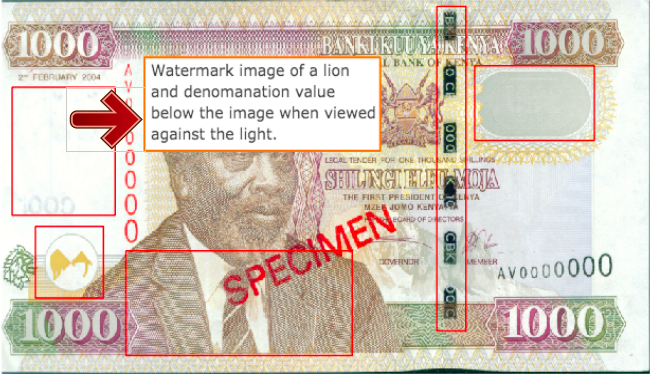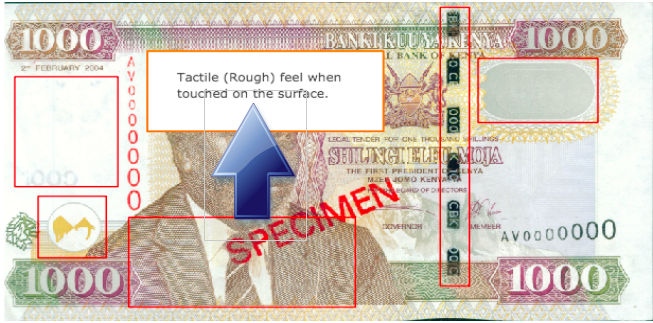Despite the growing use of mobile and card payments, majority of Kenyans still make their transactions in cash leaving us wide open to the problem of counterfeit notes.
The Central Bank of Kenya is the only authorized issuer of new currencies and its bad news for anyone who finds themselves unwittingly holding a counterfeit note because they are totally worthless as there is no way of getting it replaced with a genuine one.
If an individual innocently tries to spend a fake note and the retailer finds out that it’s a fake, the retailer is within his/her rights to confiscate and then pass it over to the police. The individual cannot demand it back nor get any compensation.
The CBK has has so far issued notes in the denominations of KES 50, KES 100, KES 200, KES 500 and KES 1000 in this series. These notes contain distinct easily recognizable security features to facilitate the detection of genuine notes vis-a-vis forgeries.
According to Central Bank, the number of fake notes in circulation has reduced significantly over the past few years because they introduced a number of new security features making the current banknotes very difficult to forge.
There is plenty of help on the Central Bank of Kenya website, showing how to check for security features on genuine notes, here is a summary on Five Key Security features to help you distinguish between genuine and fake notes;
1. Portrait Watermark
A three dimensional portrait of a lion’s head can be seen when the note is held up to the light. The watermark has a three dimensional appearance with areas in varying tones of dark and light. Below the watermark is the value numeral of the banknote i.e 1000, 100 etc. This number can be seen when the note is held up to the light. Both the portrait and value numeral depict some brightness when held up to the light. see illustration below;

2. Kenyatta’s Rough Coat
When you touch the collars of Mzee Kenyatta’s coat on the Ksh 1000 note, the feeling should be very rough as shown below.
 Security Thread
Security Thread
3. Security Thread
All genuine banknotes have a distinct interwoven thread running vertically down the right hand side of the notes. When held up to the light, the thread appears as a continuous line and it shows a series of text featuring the denomination numeral of the note and the letters CBK. The current generation of banknotes features two types of threads:

For the 1,000 and 500 shillings denominations, the thread is thicker and portrays a colour shift when viewed at angles. On other hand, the 50, 100 and 200 shilling denominations have a thinner thread silver in colour and do not depict any colour shifts when viewed at angles.
Fun fact: According to the Central Bank of Kenya, an individual can replace old, damaged or contaminated notes for free provided there are sufficient fragments or remains.
Did you know that you can exchange your mutilated notes at any CBK Branch/currency center to clean ones for free? pic.twitter.com/aa4gUukae7
— Central Bank of Kenya (@CBKKenya) August 31, 2016

















3 Comments